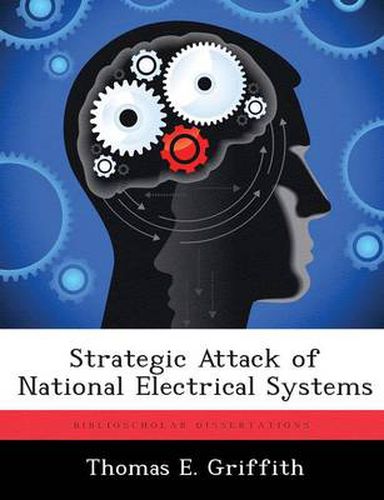Readings Newsletter
Become a Readings Member to make your shopping experience even easier.
Sign in or sign up for free!
You’re not far away from qualifying for FREE standard shipping within Australia
You’ve qualified for FREE standard shipping within Australia
The cart is loading…






This title is printed to order. This book may have been self-published. If so, we cannot guarantee the quality of the content. In the main most books will have gone through the editing process however some may not. We therefore suggest that you be aware of this before ordering this book. If in doubt check either the author or publisher’s details as we are unable to accept any returns unless they are faulty. Please contact us if you have any questions.
The United States Air Force has long favored attacking electrical power systems.Electric power has been considered a critical target in every war since World War II, and will likely be nominated in the future. Despite the frequency of attacks on thistarget system there has also been recurring failure in understanding how power isused in a nation. In addition, air planners tend to become enamored with the vulnerability of electric power to air strikes, but analysis of the cause and effect relation-ships indicates that attacking electrical power does not achieve the stated objectivesin terms of winning the war. Historically, there have been four basic strategiesbehind attacks on national electrical systems: to cause a decline in civilian morale; toinflict costs on the political leaders to induce a change; to hamper military operations; and to hinder war production. The evidence shows that the only sound reasonfor attacking electrical power is to effect the production of war material in a war ofattrition against a self-supporting nation-state without outside assistance. The implication for future strategic air operations is important. Because attacks on electricpower cause indirect collateral damage which can be politically counterproductive, and the military benefit is minimal, the United States should reject attacks onnational electrical power systems in the near futur
$9.00 standard shipping within Australia
FREE standard shipping within Australia for orders over $100.00
Express & International shipping calculated at checkout
This title is printed to order. This book may have been self-published. If so, we cannot guarantee the quality of the content. In the main most books will have gone through the editing process however some may not. We therefore suggest that you be aware of this before ordering this book. If in doubt check either the author or publisher’s details as we are unable to accept any returns unless they are faulty. Please contact us if you have any questions.
The United States Air Force has long favored attacking electrical power systems.Electric power has been considered a critical target in every war since World War II, and will likely be nominated in the future. Despite the frequency of attacks on thistarget system there has also been recurring failure in understanding how power isused in a nation. In addition, air planners tend to become enamored with the vulnerability of electric power to air strikes, but analysis of the cause and effect relation-ships indicates that attacking electrical power does not achieve the stated objectivesin terms of winning the war. Historically, there have been four basic strategiesbehind attacks on national electrical systems: to cause a decline in civilian morale; toinflict costs on the political leaders to induce a change; to hamper military operations; and to hinder war production. The evidence shows that the only sound reasonfor attacking electrical power is to effect the production of war material in a war ofattrition against a self-supporting nation-state without outside assistance. The implication for future strategic air operations is important. Because attacks on electricpower cause indirect collateral damage which can be politically counterproductive, and the military benefit is minimal, the United States should reject attacks onnational electrical power systems in the near futur